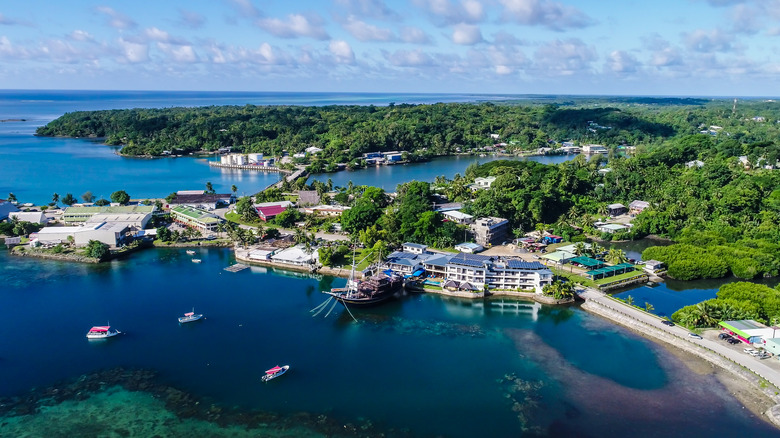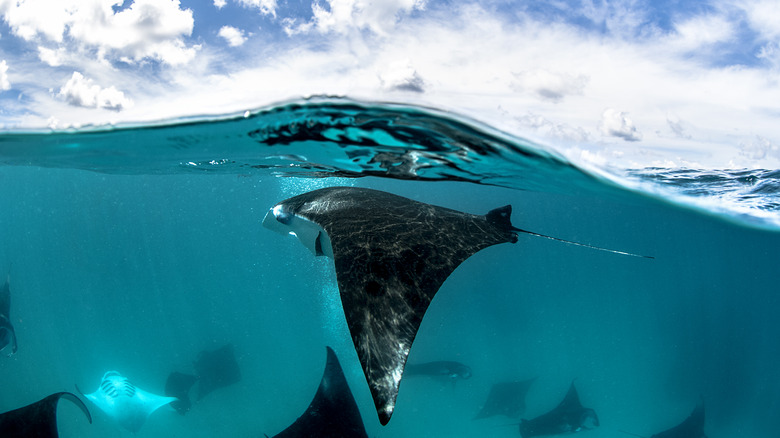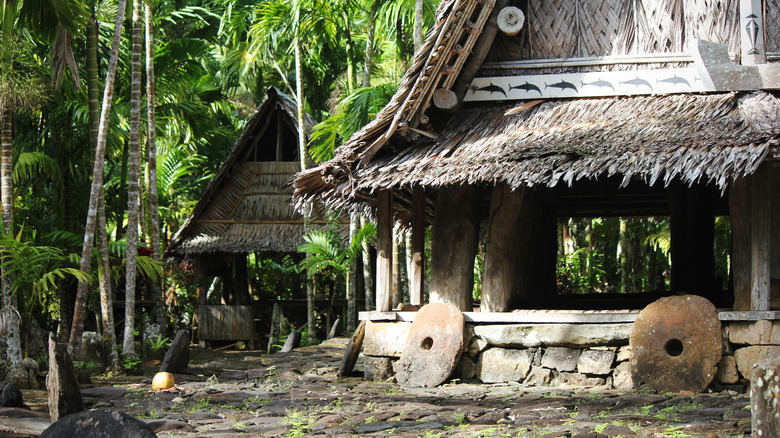This Underrated, Tourist-Friendly Island In Micronesia Is Ideal For A Serene Tropical Escape
In the far distant washes of the Pacific Ocean, one of the most idyllic secluded islands in the world is hidden away from the mainstream tourist eye. Conserving their unique culture for centuries and protecting their tropical environment, the people of Yap are ready to greet tourists into their idyllic island cluster. Settle in for a relaxing stretch on the ivory sands, don your snorkel or scuba gear for a dip with the ocean's most elusive giants, or get to know the intriguing Yapese culture.
Civilizations have traversed these beautiful islands for centuries, a marker for expert Polynesian wayfarers. The Yapese were renowned for their navigational skills, roaming the Pacific for generations before outsiders discovered their magnificent home. Its pristine white beaches, fringe of vast palm leaves and calm, clear waters draw in a new era of explorers now.
While the title of Yap applies to an island group, the vast majority of activities are oriented around Yap Proper, where the most tourism infrastructure can be found. Located 300 miles northeast of Palau, the island is truly remote. Reaching Yap requires a few flight legs from the continental U.S., most travelers boarding the 95-minute flight from Antonio B. Won Pat International Airport (GUM) in Guam for their final hop.
Embark on an underwater adventure in Yap
Fringes of technicolor coral eek out from the island's edge, alive with marine critters. Book a snorkeling or scuba diving excursion on the island to take a boat out to the areas of greatest abundance, or head to the lagoons to jump straight into a pristine underwater world. Divers and snorkelers should travel to the north of Yap Proper and make course for Manta Ridge. The eponymous giants glide here along the coral coated sea floor, hundreds of rays swimming serenely below the surface. Myriad multicolor fish dips their heads in and out of their reef world, too. Divers have a chance to spot slinking moray eels, shoals of peach soldierfish sticking to formation and enormous humphead parrotfish. Turtles, barracudas, reef sharks, and an array of rays are also frequently found by divers in Manta Ridge, and through the clear waters it's also common to spot giant clams, lobsters, and octopi creeping between coral crevices.
Snorkelers and divers who prefer calmer waters should head instead to the inland lagoons found all over the island. Let the current carry you through the lagoon channels, keeping an eye out for spiking staghorn coral and the peaceful sting rays that rest along the floor — just remember to keep your hands to yourself.
Deep-sea fishing is also a popular pastime in Yap. Arrange a tour on the island to accompany some seasoned local anglers and you could come home with mahi-mahi, skipjack tuna, red snapper, or grouper to share for dinner.
Embrace the island life, unaltered for generations, in Yap
Being from an island that prioritizes its historical customs, most Yapese people still live in traditional villages. They still hold regular festivals, ceremonies, and dances indistinguishable from those of their ancestors, donning floral crowns and skirts sewn from hibiscus. To see how they established their reputation as intrepid seafarers, take a trip out over the waves on a hand-wrought outrigger canoe. Local guides deftly navigate the tricky conditions in canoes carved by their own hand, or the hands of the many men trained from a young age to replicate the efficient boats that served the island for centuries.
To get a sense of the traditional way of life still practiced across the island, visit the Living History Museum in Colonia. While most of the customary homes and gathering places in Yap require permission to enter, the museum is open to tourists and staffed by experts on island history. Wander through the thatch-topped homes constructed from dried palm frond, being greeted in the meeting room where village representatives would hold court. Additionally, you can see a men's house, where male members of each community lived out their day-to-day lives and see the giant stone coins that the island is famed for. These donut shaped cylinders, known as Rai, measure up to 12-feet in diameter and are carved from crystallized limestone. Heavy and tricky to transport, these disks have been considered valuable ceremonial gifts and have been exchanged for hundreds of years.


